Row Like the Clappers: Ultimate Head of the River Preview
This year’s Head of the River will pit some of our best young rowing teams against each other in a contest which seems to get bigger, and more inclusive, by the year.
SA Weekend
Don't miss out on the headlines from SA Weekend. Followed categories will be added to My News.
Before the piccaninny dawn the light is charcoal grey over the water. The first lights are the little red and white globes fore and aft on the shells and sculls of the rowers at training.
Then the sounds: first the rowlocks – rhymes with bollocks – clunking, then the coxswains cajoling. Then come the boats, the eights and fours, the single and double sculls. In parallel, a peloton of coaches on bicycles patrols the lakeside path.
“Straighten up!” yells one. “You’re so hunched over you make Quasimodo look straight.”
As dawn breaks you can see who’s who and what they can do. The better senior crews just leave eight little circles on the lake’s surface as the blades of their oars catch the water. The junior crews and less expert of the seniors splash rather than catch. They won’t win.
The prize, in this centenary year of the event, is Head of the River, contested on this election day on West Lakes, where it’s been rowed since 1977, over 1500m at first then 2000m since 1990.
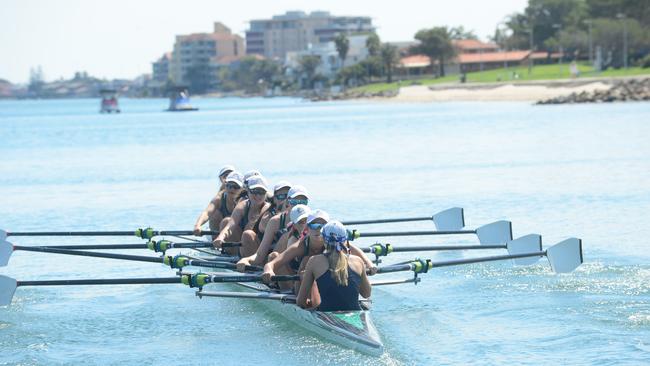
On the Torrens from 1922-1976 (except for 1967, on the Port River, and cancelled because of the polio epidemic in 1948 and 1950), it was a relative picnic at just 900m.
Realistically, this year’s boys’ 1st VIII title is between Saint Peters, Prince Alfred and Scotch College. A notable fourth is Norwood International High School, vastly under-resourced in comparison with the first three, but well-coached and determined.
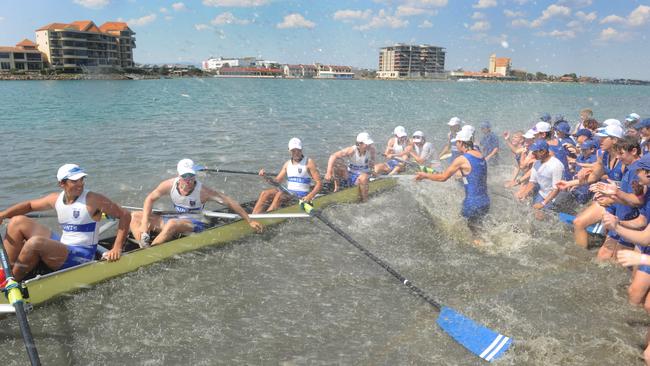
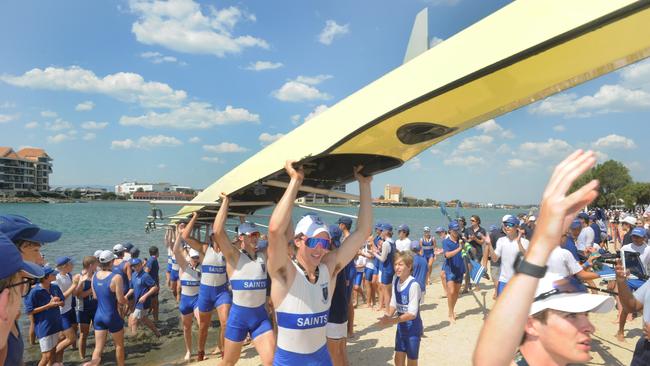
The girls’ 1st VIII final, for the Florence Eaton Cup, is a more open contest, with Wilderness, Loreto, Seymour, Walford and Scotch having performed strongly in lead-up races.
Girls have been part of this, the biggest event in Adelaide secondary schools’ sporting calendar, since 1988, when Unley High won the cup. This year, Covid-willing, there will be 562 young women rowing, and 614 young men, in a total of 62 races.
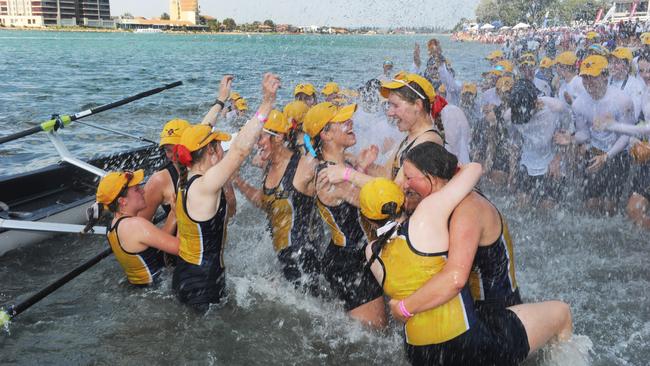
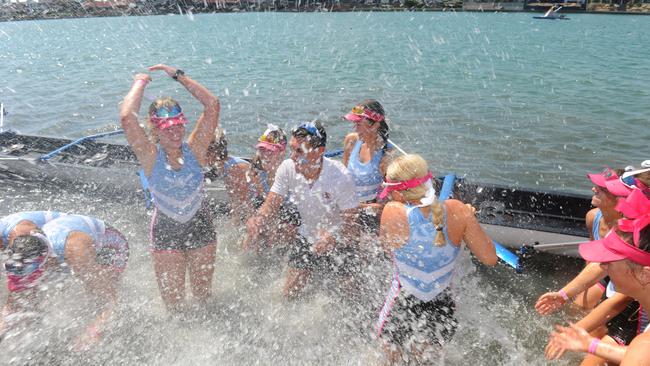
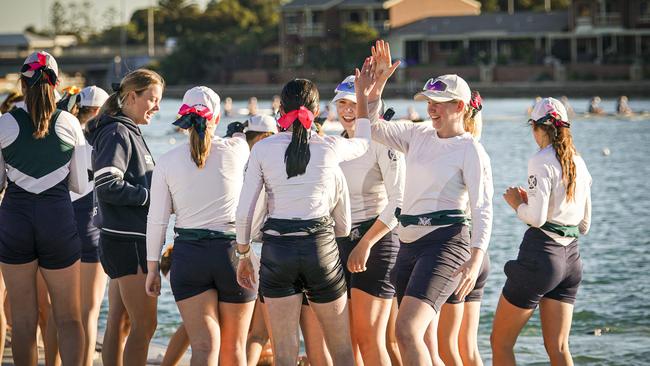
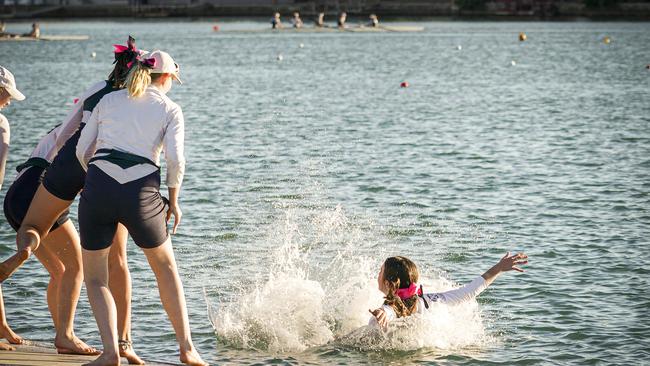
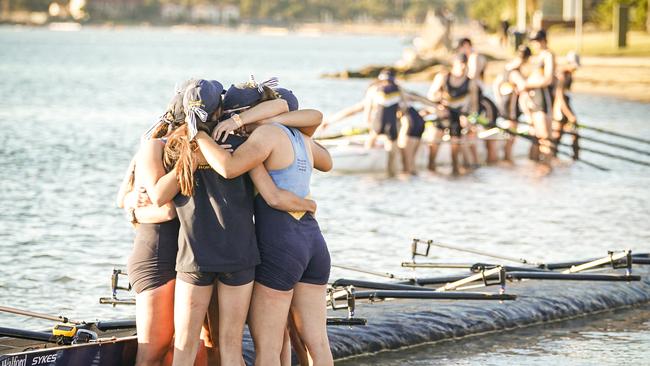
And while 12 of the 15 schools competing are private, it’s worth noting that 100 years ago, in the first Head of the River, when only two schools raced, Adelaide High School defeated St Peters School Collegiate.
Since then, Saints have taken virtual ownership of the Gosse Shield, winning more times than all other schools combined.
And they’re favoured again this year.
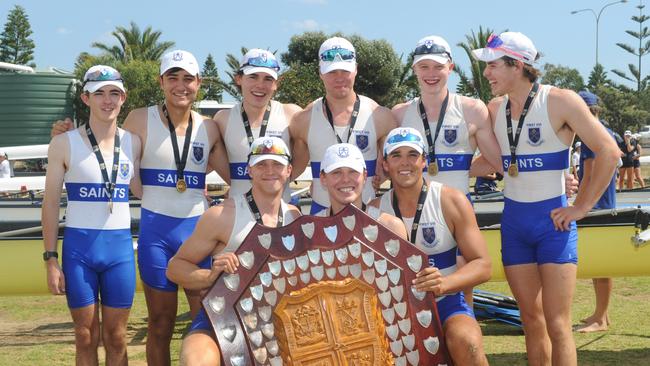
If they win, it’ll be their seventh consecutive victory, and if that happens it’ll be the third time in the history of the boys’ final that they’ve won for seven years consecutively.
The last such run of success was 2005-2011 under legendary coach David Bishop.
On the rare occasions his 1st VIII didn’t win, they came second.
Talking about his remarkable record the other day at his favourite cafe in Norwood, where staff refer to him as “The Professor”, Bishop says: “It’s the boys who win boat races. It’s what the kids do in the boat, how they cope with training, how they look after themselves – sleep, diet, fingernails and toenails, teeth – in other words, health.
“A child will give everything if they love what they’re doing.”
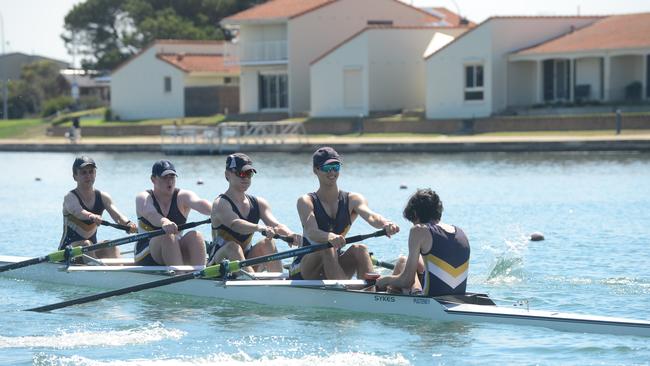
But boys who rowed under his guidance will attest to his influence as not just a rowing coach, but a life coach. Among their memories is his list of basic requirements for the summer rowing camp at Murray Bridge, where he would include: “Reading matter of worth.”
“It’s important to sow the seeds of successful entrepreneurship,” says Bishop, himself a former successful rower at national level.
Quoting another legendary coach, the late Roger Moore, Bishop says: “Rowing in an eight is the equivalent of running a four-minute mile backwards, in step with seven other people.”
Such an ungainly image doesn’t come to mind watching the timeless grace and elegance of great crews working in harmony, catching the water with the oar’s blade, driving the boat forward smoothly, releasing the blade from the water, rotating the wrists, pushing back and repeating the movement in continuous motion.
The first rowing endeavour recorded in historywas in Egypt in 1430BC.
It was popularised in the 18th century in England, where the first Oxford v Cambridge varsity race was rowed in 1828. Now rowing federations are registered in 150 countries.
Change hasn’t come quickly. Like sailing, it’s moved from timber hulls to carbon fibre and kevlar, as well as lighter oars and, from 1857, seat-slides.
Nor does success come easily.
Today’s regatta will be the culmination of more than seven months training, with several gym sessions a week and several more on the water.
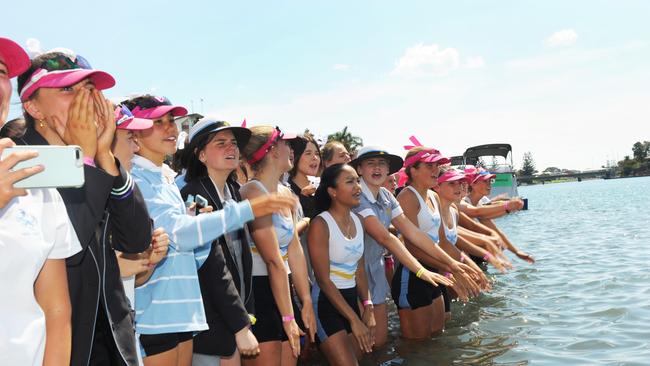
For the younger crews, from school years eight and nine, it’s tiring, and accommodating such a rigorous routine requires time management that can winnow the unwilling.
In keeping with the proliferation of young women in the sport, this year’s landmark event will be hosted by Walford, the girls’ school with a winning percentage in the prestige 1st VIII competition that’s almost as enviable as Saints in the boys.
In 31 finals since first racing at the Head of the River, Walford’s won 15 times. This year they have more than 70 girls registered for their 16 crews.
The three public schools rowing today will be Norwood International, Unley High and Adelaide High, where rowing director Jo Malcolm’s aim is a “sustainable management plan” for the sport, despite the resources gap between the public and private schools.
Malcolm, a former rower, says young women are clearly a big part of the plan, in a sport which allows them to be “unashamedly strong” in a variety of ways, and promotes not just physical strength, but great discipline, determination and persistence.
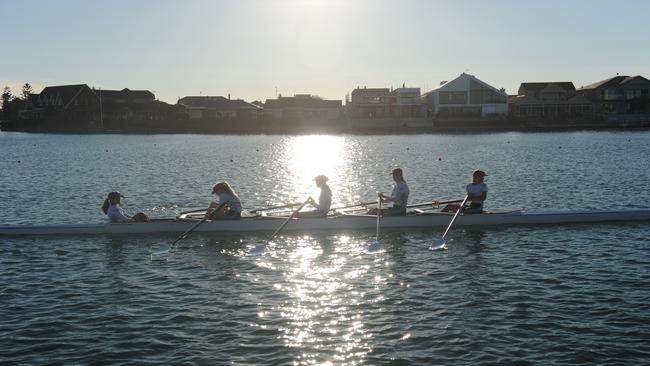
At Norwood International, where both boys and girls 1st VIIIs row in second-hand shells, program co-ordinator Ben O’Connell says the school is trying to “balance performance with participation”, with about 100 students now in the program.
Year 12 student Lauren Adler is Norwood’s captain of boats (girls) and will row today in seat two or four of the 1st VIII.
The crew tuned up for the business end of the season with a 138km row over two days, from Blanchetown to Mannum.
“It’s a demanding sport,” Adler says. “I don’t necessarily work out a lot – I don’t want to be too muscly. I just keep pushing. And if we record our best time, that’s a win.” ■



